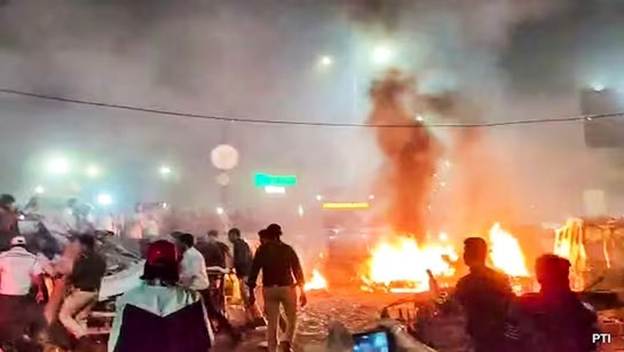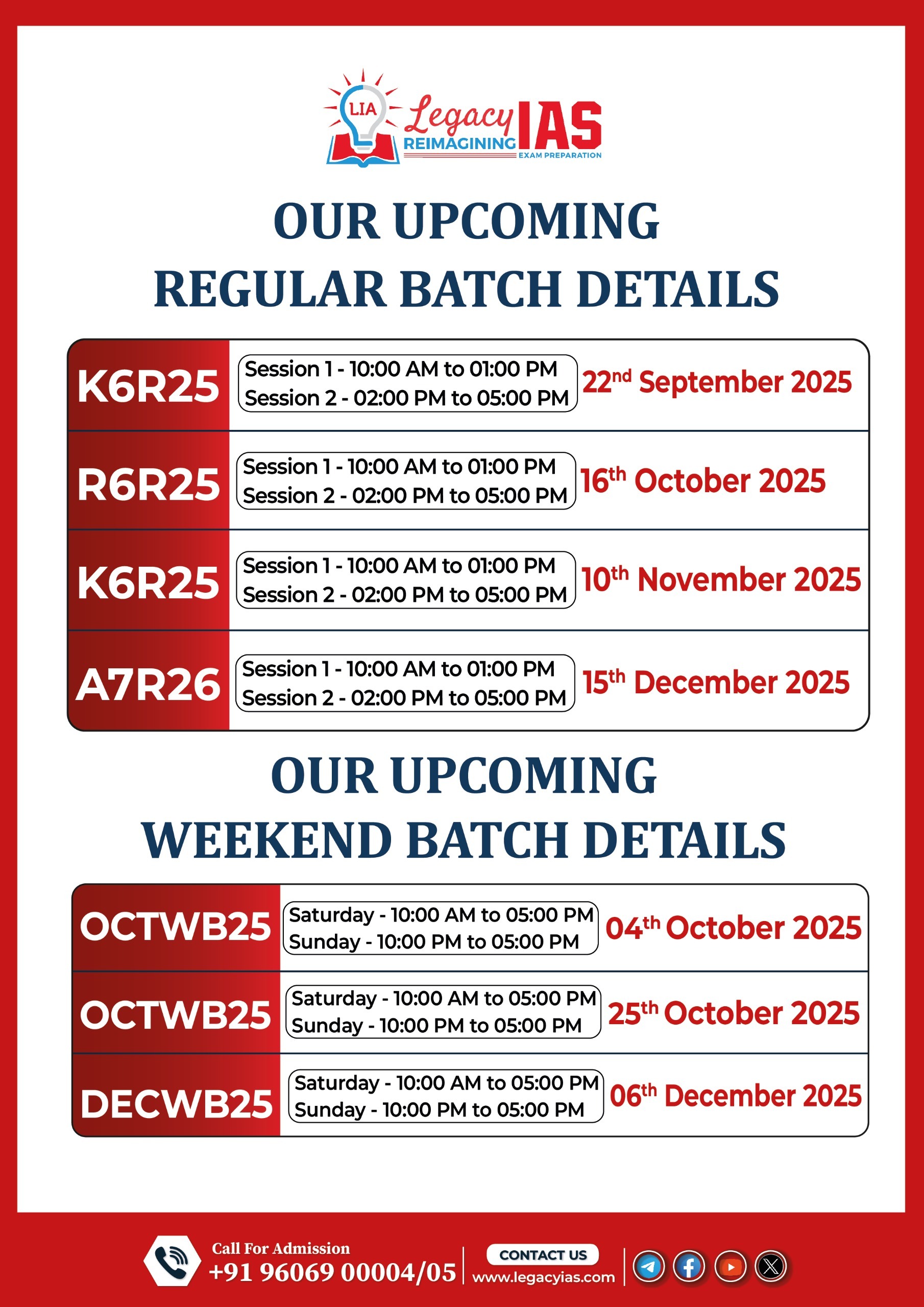Why in News?
- A high-intensity explosion occurred in a slow-moving car outside the Red Fort, New Delhi, killing at least 9–10 people and injuring over 20.
- Simultaneously, the Jammu & Kashmir Police busted an inter-State and transnational terror module linked to Jaish-e-Mohammed (JeM) and Ansar Ghazwat-ul-Hind (AGuH).
- The seizure of 2,600 kg of IED-making material in the past 15 days points to a major terror plot with possible linkages between the two incidents.
Relevance:
GS 3 – Internal Security
• Terror financing, cyber-radicalisation, and hybrid terrorism
• Coordination among security and intelligence agencies (NIA, NSG, MAC)
• Cross-border terrorism and Pakistan’s proxy networks
• Regulation of explosives, chemicals, and digital evidence
• Legal framework – Unlawful Activities (Prevention) Act, 1967; Explosives Act, 1884
GS 2 – Governance & Polity
• Centre–State coordination in law and order matters
• Role of judiciary and human rights protection in counter-terror operations

Basic Facts
- Location: Red Fort Traffic Intersection, Central Delhi – a high-security zone near several strategic sites.
- Time of Blast: Around 7:00 p.m.
- Casualties: 9–10 killed, 20+ injured.
- Suspects: Car registered under a person detained in Gurugram, Haryana.
- Investigating Agencies: Delhi Police, NIA, NSG, FSL, IB.
- Home Ministry Action: Union Home Minister Amit Shah ordered a multi-agency probe and maintained that “no angle is ruled out”.
Terror Module Details (J&K Angle)
- Arrests: 7 individuals linked to JeM and AGuH, both Pakistan-based terrorist organizations.
- Seizure: 2,900 kg of IED-making materials — including ammonium nitrate and other components.
- Pattern: Indicates revival of hybrid terrorism — radicalized youth and professionals working covertly, often with online radical handlers.
- White-Collar Radicalism: Police noted involvement of educated professionals and students, forming a “white-collar terror ecosystem.”
- Foreign Handlers: Suspected coordination from Pakistan and Gulf countries through encrypted digital platforms.
Background: Terror Trends in India (Data-Based Context)
- NCRB 2023 Data:
- J&K still accounts for over 70% of registered terror incidents in India.
- NIA’s 2022–24 investigations show a rise in transnational linkages in modules across Delhi, Punjab, and Karnataka.
- NSCS (National Security Council Secretariat) 2024 Analysis:
- Hybrid terrorism — local actors + foreign funding — is now the dominant modus operandi.
- The use of chemical precursors for IEDs has risen by over 300% since 2019.
- Delhi as a Target:
- Previous attacks include 2000 Red Fort Attack by Lashkar-e-Taiba (Lt. General Ashfaq Rehman case) and 2005 Diwali Delhi bombings.
Possible Linkages & Patterns
- Cross-border Nexus:
- JeM and AGuH share roots in Pakistan’s Bahawalpur and Peshawar networks, historically aligned with ISI’s low-intensity proxy warfare.
- Digital Radicalization:
- Use of Telegram, Signal, and dark web forums for recruitment and funding.
Security Implications
- Urban Terrorism Threat: Shift from large-scale attacks to localized, high-impact incidents using easily available chemicals.
- Challenges for Intelligence Agencies:
- Difficulty tracking low-cost, decentralised cells.
- Need for better inter-agency coordination (IB–NIA–State Police).
- Critical Infrastructure Security: The blast near Red Fort exposes vulnerability even in high-security zones.
Institutional Mechanisms Involved
- National Investigation Agency (NIA): To probe inter-State and foreign linkages.
- Multi-Agency Centre (MAC): Coordinates intelligence inputs from IB, R&AW, and State Police.
- UAPA (Unlawful Activities Prevention Act): Legal framework for prosecution of arrested individuals.
- National Security Guard (NSG): For bomb disposal and forensic sampling.
Way Forward
- Integrated Urban Surveillance: Expansion of CCTNS + ICJS network to track suspect movement.
- Regulation of Chemical Sales: Strict control over dual-use precursors under the Explosives Act, 1884.
- Deradicalization Programs: Targeting educated youth susceptible to ideological indoctrination.
- International Cooperation: Enhanced intelligence sharing with Gulf nations and Interpol for tracing transnational handlers.
- Counter-Fake News Monitoring: Many such incidents see misinformation surges, affecting communal harmony.



